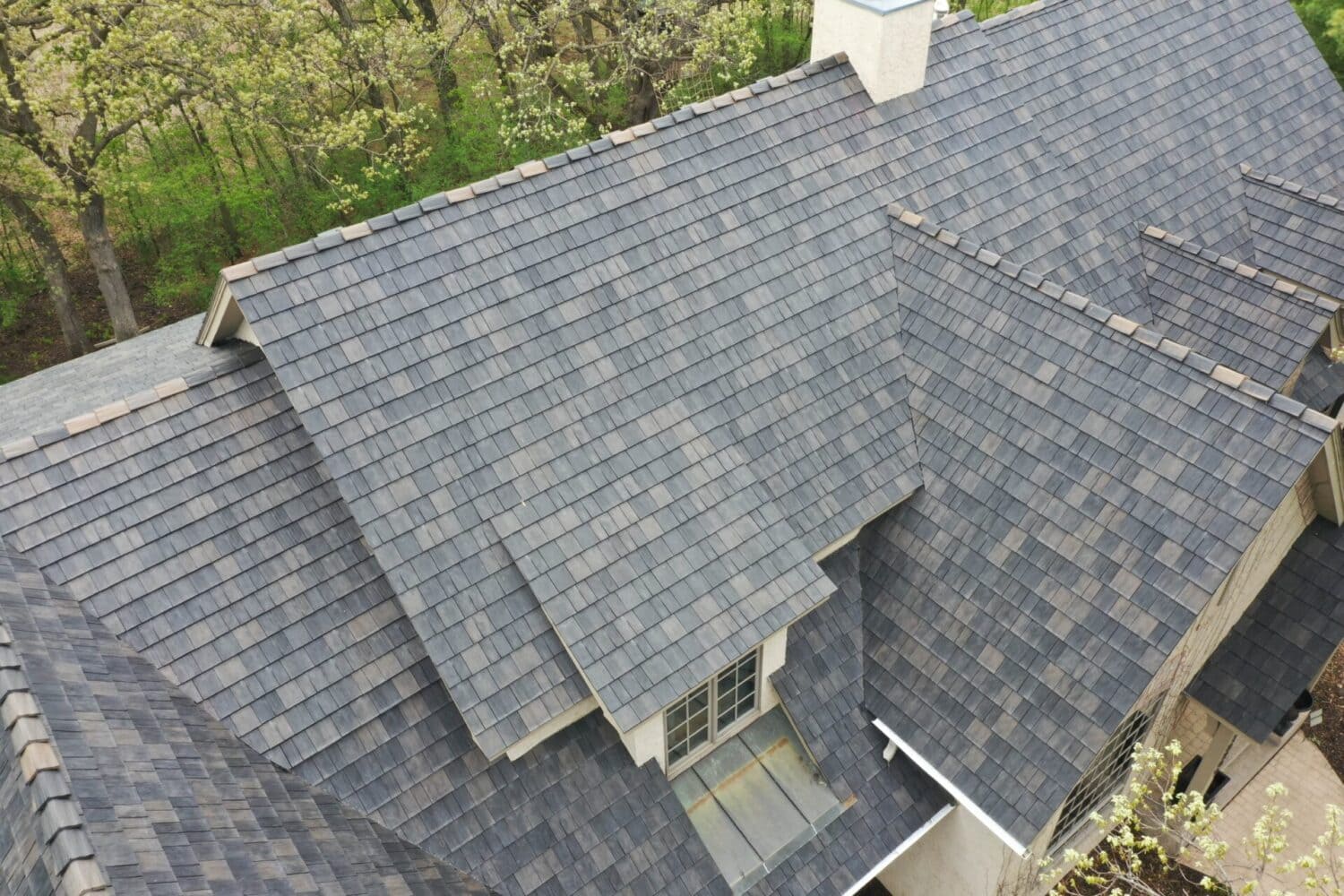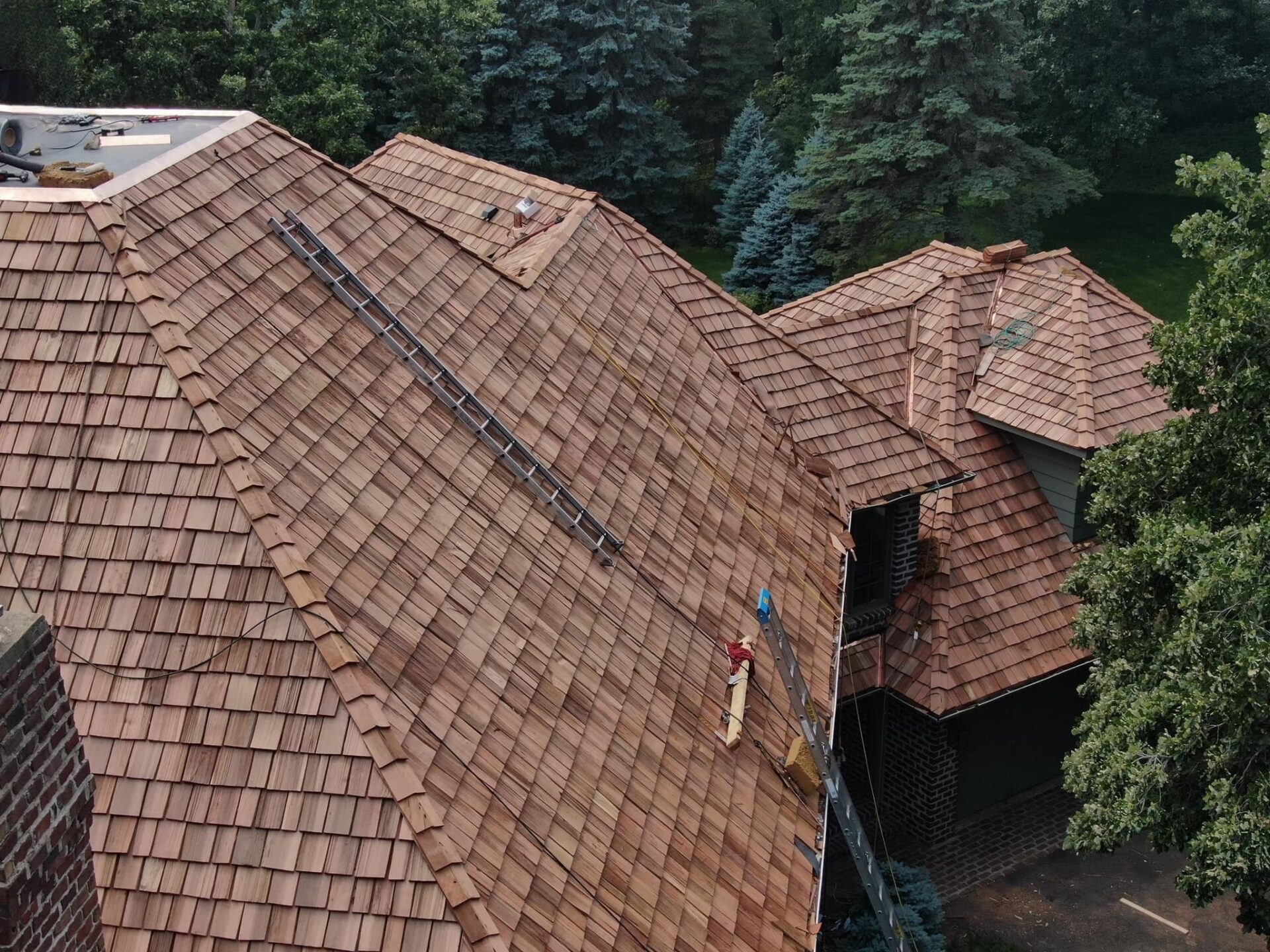If you have been thinking that the time has come to redo your roof, you may have heard about a roof overlay as an option for a full roof replacement. It is true that in certain circumstances, a roof overlay may be an option for a roof re-do, but before investing in a home improvement project, it’s always best to know as much as you can. This is especially true when it comes to your roof, which not only adds to the structural design of your home, but more importantly, protects your home’s interior. Let’s look at everything you need to know about a roof overlay to help you decide what’s best for your home.
We will cover:
- What is roof overlay and how it is done
- The benefits of a roof overlay
- How long a roof overlay lasts
- How to determine if a roof overlay is a good idea for your home
What Is a Roof Overlay?
A roof overlay or re-roof is done by laying new asphalt shingles over your old asphalt shingles. These overlay shingles cover the existing shingles, giving your roof an upgrade without having to do a full tear off and replacement.
Roof Overlay Requirements
Roof Slope
This re-roof option can be done on a roof with at least a 2:12 pitch, meaning it rises up two vertical units (inches or feet) for every horizontal unit it goes out. This is the minimum pitch required for an asphalt shingle roof. This requirement supports a roof’s longevity, as it supports the shedding of water and snow. Asphalt shingles deteriorate faster when exposed to standing water, which is more likely on flatter roof styles.
A low-slope or flat roof overlay is possible with a roof overlay system that includes a durable membrane roofing material to provide protection. This membrane may be made out of a synthetic rubber like E.P.D.M., thermoplastic like a TPO, modified bitumen, or P.V.C.
Roofing Material
The question is not so much, can you put shingles on top of shingles, as it is can you put shingles over any other type of roofing material? The answer to that question is simply no. You can only overlay roof shingles on top of asphalt roof shingles.
Roof Condition
A roof overlay is best done on a roof that is in fairly good condition. If your roof is damaged and leaking, a full tear off will locate the source of the leak and repair the damaged roof. This is not possible with an overlay, which only covers the existing problem instead of addressing it. Also, if your roof has a lot of broken, cracked, or deteriorating shingles, a tear off and replacement usually yields a better outcome. Laying new shingles on top of broken or cracked shingles can cause buckling and gaps, which can trap water and damage your roof.
How to Do a Roof Overlay?
A roof overlay involves a couple of steps to complete. Your roofer usually starts by removing ridge caps, air vents, and pipe flashings. They will also repair any torn, cracked, or broken shingles and sweep your roof clean of debris to get the surface as flat and clear as possible before laying down a new set of shingles. Your roofer will then cut and install your new shingles over your existing ones. They will also most likely install new flashing and air vents too.
What Are the Benefits of a Roof Overlay?
If your roof needs a re-do, there are some benefits to taking the roof overlay option.\
A Smaller Price Tag
The roof overlay cost is generally cheaper in the short run than a full tear off and replacement. This is mostly due to a reduction in labor costs because a re-roof does not require the old roof to be torn off. It is a shorter process with less work for the roofer, therefore you pay for less time.
A Shortened Timeline
By skipping the tear off process involved with a roof replacement, a roof overlay takes a lot less time to complete. On average, a roof overlay takes about a day or two to complete. The overall timing depends on the size and design of your roof and how much preparation needs to be done to get your roof ready for the new shingles to go over the old ones.
Reduced Mess
Tearing off a roof is messy. A reputable roofer will take precautions to contain the mess, but while the roof is being torn off, you do have to deal with a lot of mess on your property. With a shingle overlap, you do not tear off the old shingles and replace them. By keeping the existing ones, you avoid the mess caused during the tear off process. You also avoid the fees associated with clean up and disposal of that mess. This reduced mess also contributes to the reduced cost of a roof overlay.
 How Long Does a Roof Overlay Last?
How Long Does a Roof Overlay Last?
Generally, a roof overlay will last 15 to 20 years if done well. This depends, of course, on the condition of your roof, the climate you live in, and whether you have any roof damage down the road. A roof tear off and replacement does last longer than a roof overlay. On average, getting a full roof replacement can last anywhere between 20 to 50 years, depending on the types of roofing materials you use. With a roof overlay, you are mostly buying yourself time before having to do a full replacement. It can often act as more of a delay to a full replacement, and not in place of one.
Is an Overlay Roof a Bad Idea?
The circumstances where a roof overlay is a good option over a tear-off and replacement are limited. If your roof is reaching the long end of its life cycle, an overlay can be an option to delay a full replacement later down the road. This is only possible though, if your roof is still in good condition. Getting a roof inspection is important to determine your roof’s condition before proceeding with an overlay. Laying new shingles over your existing shingles is a short-term roofing solution. Eventually, you will have to invest in a full tear off and replacement to improve the look and function of your roof.
There are some negatives to a roof overlay that should be considered as well when weighing this roof redo option.
Reduced Home Value
A roof overlay can reduce the value of your home. With two layers of shingles on your roof, a new buyer will know that when they need to do a roof replacement it will cost them more because they will have to pay to have two layers of shingles removed in a tear off. In the long run, this double tear off can make an overlay much more expensive.
Extra Weight
Asphalt shingles are heavy. They add a lot of weight to your roof. Two layers of shingles add even more weight, making your roof much heavier. This can cause maintenance issues and compromise the integrity of your roof and cause damage. This can be especially true in colder climates where snow can accumulate on your roof and make it even heavier. This can lead to structural damage and possible collapse, which is a very expensive problem to have.
Limited Roofing Material
Since you can only put asphalt shingles on top of asphalt shingles, a re-roof can only be done if you have an asphalt shingle roof. You cannot overlay a metal roof or a tiled roof or a cedar or slate roof. You can also not cover these roofing materials with asphalt roofing shingles. If you need a re-roof and you have any other type of roofing besides asphalt shingles, a full replacement is necessary.
Aesthetically, you are also limited in a roof overlay to asphalt shingles. If you want to change up the look of your roof, an overlay is going to limit the choices you have for doing that.
Lack of Inspection
If you do not tear off your existing roof, it is impossible to know if there is damage underneath the roofing shingles. A tear off gets down to your roof decking and your roofer gets a chance to see what it looks like. They also get a chance to see if there are any structural issues related to your roof. Getting a chance to inspect what is under your shingles, also means any problems that are found can be repaired. With a re-roof, there is no visual inspection of your decking and no repair of a damaged decking either. This can add to the risk of a re-roof because there is no way to get a complete roof inspection.
Long Term Costs
The negatives of a roof overlay, including a lack of inspection, extra weight, and the costs of eventually having to remove two layers of shingles, add to the long-term costs or potential costs of a roof overlay. An overlay will not save you money in the long run if your roof is damaged or becomes damaged. The limited lifespan of an overlay also needs to be factored into these long-range costs.
On top of these considerations, overlaying new shingles on top of your existing ones can cause problems by making your roof more uneven. If your old shingles are curled or the wood decking under your old shingles has soft spots, dipping may occur between your trusses. This can cause the new shingle layer to not only look uneven but also cause structural damage to your roof. This too becomes a long-term cost associated with a roof overlay.
Final Considerations for a Roof Overlay
A roof overlay may be an option to a full roof replacement, but only under limited circumstances. In the long run, you will need to replace your roof with a full tear-off and replacement. The best thing to do before deciding to do a roof overlay is to get a roof inspection done by a reputable roofing contractor. Bringing in a professional roofer will give you the best overall picture on your roof’s condition and the options you have for doing a roof refresh. This information is vital to deciding whether your roof would be a good candidate for an overlay.


 How Long Does a Roof Overlay Last
How Long Does a Roof Overlay Last